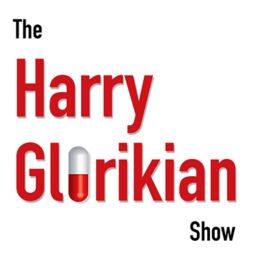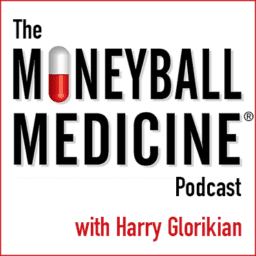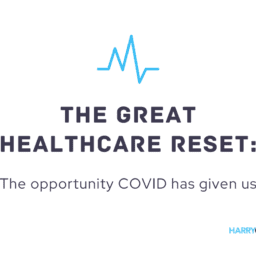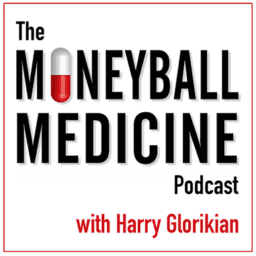NextGen Healthcare: The problem isn’t genomics
by Harry Glorikian, a reply to Erik Parens
Original Article can be found here: https://www.thejournalofprecisionmedicine.com/next-gen-healthcare-the-problem-isnt-genomics/
Introduction
At the end of June, the world celebrated the 20th anniversary of the initial draft release of the Human Genome Project. Fewer technological advancements of the last century have had as much positive financial and human impact as sequencing the genome, and I was fortunate enough to have a front-row seat. At the time, I worked for Applied Biosystems Inc., one of the companies making the sequencing platforms used by scientists working on the Human Genome Project. In the decades since, I’ve held a variety of positions in the healthcare/ life sciences industry, allowing me the unique opportunity to see first-hand just how beneficial it has been. It’s from this viewpoint that I read, with significant dismay, “The Inflated Promise of Genomic Medicine” by Erik Parens, published by Scientific American and shared by many in the scientific and bioethics communities. (see Parens, Erik. The Inflated Promise of Genomic Medicine. Scientific American Blog. https://blogs.scientificamerican.com/observations/the-inflated-promise-of-genomic-medicine/, Accessed June 10, 2020)
In his essay, Parens rightfully called out the “grotesquely disproportionate impact” that COVID-19 has had on non-white populations and the roles of health disparities and social conditions on disease burden more generally. Where he misses is in his assertion that the promises of genomic medicine have been largely underdelivered. He downplays Precision Medicine’s accomplishments for anything other than hereditary cancer syndromes, like those caused by BRCA1/2 mutations. He criticizes the NIH program, “All of Us,” which is structured to include diverse communities and collect data on environmental, social, and lifestyle factors that could be interacting with biological/genetic mechanisms. Parens ends his piece with a call on the NIH to be more “realistic” about the role genetics plays in our health and thoughtful about the vast sums of money it is investing in genomic medicine.
After my decades in the field, I think he’s mistaken.
In this piece, I would like to place the focus of precision medicine where it belongs – the delivery of best-value care, by which I mean the provision of the safest and most efficacious treatment by healthcare providers to a patient based on data. Such an approach envisions a potentially more expensive, but more efficacious treatment, that saves costs significantly in the long run. I argue that precision medicine starts with a precise diagnosis of a condition that integrates a thorough review of a patient’s case history and clinical profile (including genomic, proteomic, etc.) and the selection of the best therapies for the patient based on these data.
Background
The Human Genome Project, fulfilled at an eventual cost of $2.7 billion, has brought a return on investment of 141:1 and generated millions of job-years of employment. The financial implications continue to stack up positively – twenty years later. Entire industries have arisen based on the technologies and scientific insights stemming from that early draft sequence. We’ve seen tremendous advancements – like the ability to sequence and interpret a human genome now in a matter of days – in acute situations like neonatal intensive care units.
When I think back to my time at Applied Biosystems, I don’t think anyone then could have imagined we’d be technically where we are today in such a short period of time. And the advancements keep coming. Faster sequencing platforms, AI- and machine learning-enabled analysis, and countless diagnostic tests for any number of conditions. The technological gains and scientific cooperation we’ve made since 2000 are what allowed us to sequence the novel COVID-19 virus in a fraction of the time it took us to sequence the SARS virus, a feat which will no doubt take even less time in years to come. Scientists and innovators continue to push the envelope and investors (and taxpayers) continue to reap the financial and scientific rewards.
Applications
The health benefits go far beyond hereditary cancer syndrome testing and treatments, but that’s a good place to start. Even though we knew before the final genome sequence was published that some cancers were caused by mutations in certain genes, what we’ve done since is amazing. Take for example, gastric cancer. Research by the National Human Genome Research Institute and the National Cancer Institute in 2014 were able to show that gastric cancer isn’t a single disease – it’s four different diseases, with specific molecular markers and tumor characteristics.
In fact, as the role of molecular markers, or mutations, in cancer has been illuminated, scientists are rethinking how we classify and treat cancers in general. Patients are now eligible for treatment in clinical trials based on the molecular (genetic) composition of their cancer – not just based on where doctors found it. And oncologists can more accurately predict which patients will improve on certain chemotherapy regimens based on the molecular profile of their tumor or underlying genetics. Compared to how we used to diagnose and treat patients with cancer, the returns from the Human Genome Project have been nothing short of miraculous.
Cancer is just the tip of the iceberg
Until the past several decades, the life expectancy of a patient with cystic fibrosis (CF) was poor. Treatments focused on antibiotics, nutritional, and pulmonary therapies, like percussion vests to help break up the thick secretions in the lungs. Indeed, the Cystic Fibrosis Foundation Patient Registry, established in 1966, found that early on, most patients died before reaching school-age. Today, we’ve identified more than 1,900 different mutations in the CFTR gene and developed four new treatments, CFTR modulators, that are helping patients with CF live longer and healthier lives.
Once again, CF is just one of numerous examples of pharmacogenomics, the intersection between pharmacology and genomics, improving the lives of patients. The Clinical Pharmacogenetics Implementation Consortium, a group of clinicians and researchers, has developed more than twenty clinical guidelines for a wide variety of drugs, from aspirin and non-steroidal anti-inflammatories (NSAIDS) to the blood thinner Warfarin.
Several of these guidelines reflect FDA ‘black box warnings’ or recommendations for genetic testing before initiating treatment, such as testing patients for a specific HLA-B variant before prescribing abacavir for HIV infection. Considering how many people take one or more of these drugs regularly, it’s not hyperbolic to state that precision medicine, through pharmacogenomics, is impacting millions of patients every year, by determining the best treatment or right dose for a patient or by preventing adverse events in others.
I could go on with more examples, such as how genomic medicine is revolutionizing the world of rare diseases, from diagnosis to helping these patients find answers, and sometimes treatments, for their disorders. Or how it’s helping doctors more accurately diagnose the different forms of monogenic diabetes, which often mimics Type 1 or Type 2 diabetes. The list goes on and new applications are being developed almost weekly.
Summary
In my work, I see innovative applications of genomic technologies all the time and often talk with physicians and researchers about how Precision Medicine is starting to meaningfully shift the needle in any number of ways. This is why I think Erik Parens is wrong to suggest we should rethink the money the NIH invests in genomic medicine and put it toward improving health disparities. I agree entirely that environmental and social factors contribute disproportionately to health disparities and need to be addressed if America is serious about improving the health and well-being of all citizens. But rather than focus on genomic medicine, where the evidence clearly shows both improvements to patient lives AND beneficial financial return, we should turn our attention to promoting best-value healthcare instead. And that encompasses using precision medicine to reduce healthcare disparities since the best-value medicine could be provided to those who suffer disproportionately from conditions such as diabetes or heart disease.
Unnecessary surgeries, like knee arthroscopy for osteoarthritis, duplicative imaging studies, and expensive COPD medications that work no better than lower-cost options are prime examples. A 2018 Health Affairs blog co-authored by Preeti Malani and Dr. Jeffrey T. Kullgren at the University of Michigan noted that failure to provide best-value healthcare services and wasteful healthcare spending costs the U.S. an estimated $750 billion each year. That’s money without a positive return on investment and often, with worse outcomes for patients. Compared to the $26 billion that NIH spent in extramural funding in 2016 on genetics-related research, it should be obvious where the change needs to happen.
In the end, I think Parens got it half-right by calling out the disproportionate impact of COVID-19 due to health disparities. This is important and should lead to further investigation to find ways of minimizing the impacts of current and future pandemics in these communities. But faulting genomics and diminishing the significant benefits, both economic and scientific, because we haven’t perfected precision medicine is not only short-sighted, it’s disingenuous. Let’s instead take our successes and work to make them more inclusive and work better for all individuals. And if we need to look at where to draw the funding from, let’s point the finger where it belongs.

General Partner, Scientia Ventures
Before joining Scientia Ventures, he served as an Entrepreneur-In-Residence to GE Ventures – New Business Creation Group, leading to the founding of Evidation Health and DrawBridge Health. He currently. serves on a number of different boards both public and private. He is also a co-founder and an advisory board member to DrawBridge Health. Harry holds an MBA from Boston University and a bachelor’s degree from San Francisco State University. Harry has addressed the NIH, Molecular Medicine Tri-Conference, World Theranostics Congress, and other audiences, worldwide. He has authored numerous articles, appeared on CBS Evening News, and been quoted regularly by Dow Jones, The Boston Globe, Los Angeles Times, London Independent, Medical Device Daily, Science Magazine, Genetic Engineering News, and many others. He is the author of two books: Commercializing Novel IVD’s; A Comprehensive Manual for Success and MoneyBall Medicine: Thriving in the New Data-Driven Healthcare Market and the host of the MoneyBall Medicine® podcast series.
Background for Browsing
National Institutes of Health. All of Us. https://allofus.nih.gov/. Accessed July 28, 2020
National Human Genome Research Institute. Human Genome Project FAQ, https://www.genome.gov/human-genome-project/Completion-FAQ. Last updated February 24, 2020.
Gitlin, JoNathan Max. Calculating the economic impact of the Human Genome Project. https://www.genome.gov/27544383/calculating-the-economic-impact-of-the-human-genome-project. Last updated June 12, 2013.
Kingsmore SF, Cakici JA, Clark MM, et al. A Randomized, Controlled Trial of the Analytic and Diagnostic Performance of Singleton and Trio, Rapid Genome and Exome Sequencing in Ill Infants. Am J Hum Genet. 2019;105(4):719-733. doi:10.1016/j.ajhg.2019.08.009.
Zhang W. (2014). TCGA divides gastric cancer into four molecular subtypes: implications for individualized therapeutics. Chinese journal of cancer, 33(10), 469–470.https://doi.org/10.5732/cjc.014.10117
Doyle, Chase. Basket Clinical Trials: A New Era in Cancer Treatment. Oncology Pharmacist. http://theoncologypharmacist.com/conferencecorrespondent-top/17224-basket-clinical-trials-a-new-era-in-cancertreatment. Last upldated August 2017.
MacKenzie, T., Gifford, A. H., Sabadosa, K. A., Quinton, H. B., Knapp, E. A., Goss, C. H., & Marshall, B. C. (2014). Longevity of patients with cystic fibrosis in 2000 to 2010 and beyond: survival analysis of the Cystic Fibrosis Foundation patient registry. Annals of internal medicine, 161(4), 233–241. https://doi.org/10.7326/M13-0636
De Boeck K, Zolin A, Cuppens H, Olesen HV, Viviani L. The relative frequency of CFTR mutation classes in European patients with cystic fibrosis. J Cyst Fibros. 2014;13(4):403-409. doi:10.1016/j.jcf.2013.12.003
Lopes-Pacheco M. CFTR Modulators: The Changing Face of Cystic Fibrosis in the Era of Precision Medicine. Front Pharmacol. 2020;10:1662. Published 2020 Feb 21. doi:10.3389/fphar.2019.01662
Clinical Pharmacogenomics Implementation Consortium. Guidelines. https://cpicpgx.org/guidelines/. Last updated July 11, 2019.
GlaxoSmithKline. Ziagen Full Prescribing Information. https://www.accessdata.fda.gov/drugsatfda_docs/label/2008/020977s019,020978s022lbl.pdf. Accessed July 28, 2020.
Royal Australasian College of Physicians. Doctors warn against unnecessary arthroscopic knee surgery. RACP https://www.racp.edu.au/news-and-events/media-releases/doctors-warn-against-unnecessary-arthroscopic-knee-surgery. Accessed July 28, 2020
Grouse L. (2014). Cost-e ective medicine vs. the medical-industrial complex. Journal of thoracic disease, 6(9), E203–E206. https://doi.org/10.3978/j.issn.2072-1439.2014.09.01
Tung, M., Sharma, R., Hinson, J. S., Nothelle, S., Pannikottu, J., & Segal, J. (2018). Factors associated with imaging overuse in the emergency department: A systematic review. The American journal of emergency medicine, 36(2), 301–309. https://doi.org/10.1016/j.ajem.2017.10.049
Malani, Preeti; Kullgren, Je rey T. To Curb Overuse Of Low-Value Health Care Services, Engage Older Patients, https://www.healthaffairs.org/do/10.1377/hblog20180308.855164/full/, MARCH 13, 2018





